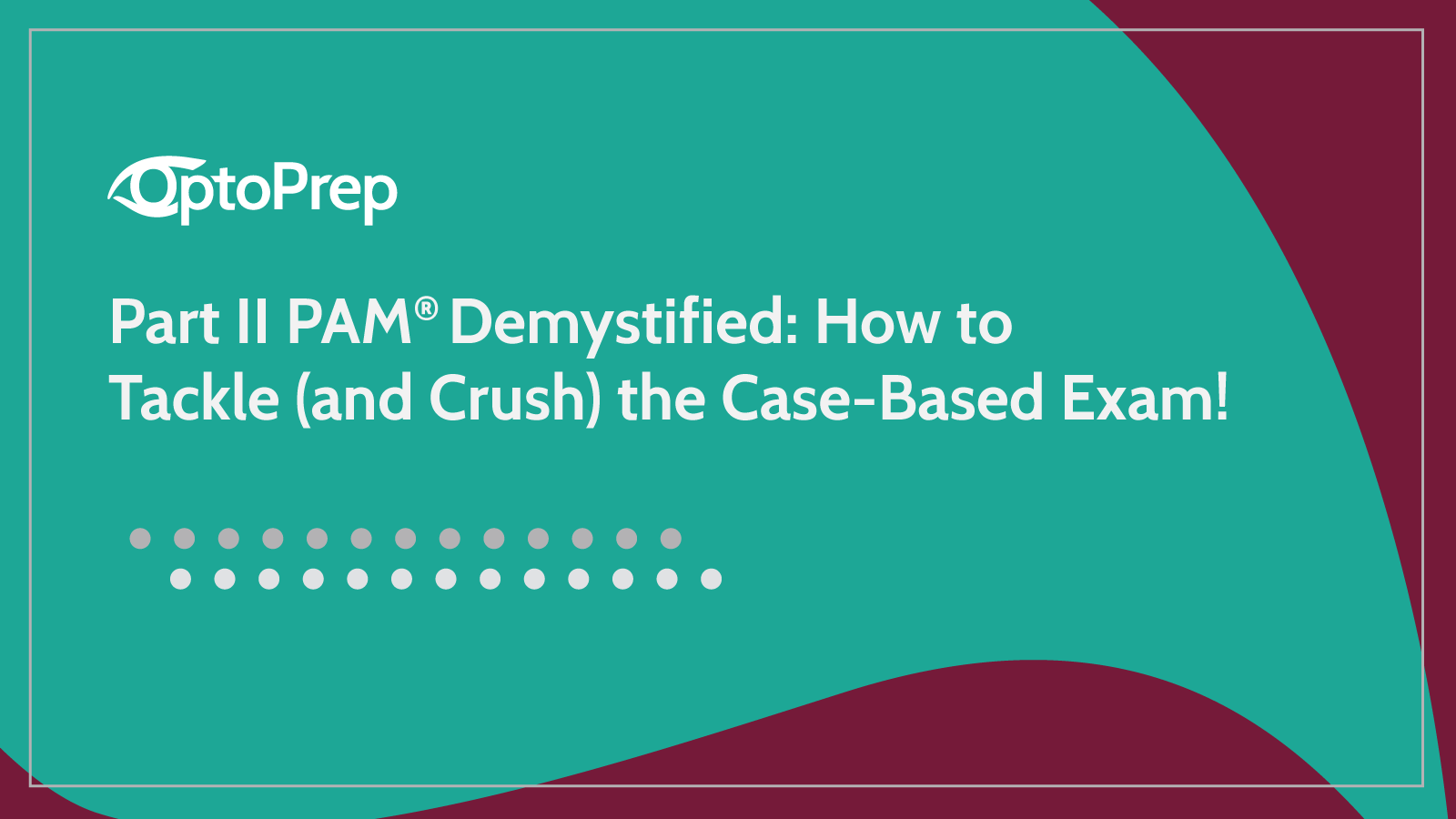
In the previous blog post, we talked about the similarities and differences between NBEO® Part I and NBEO® Part II. Taking all of the differences into consideration, it is important to know exactly how to dive into a PAM® case and answer the questions effectively and efficiently.
The NBEO® website offers many tools that can be used to study as well as a handful of real PAM® cases to familiarize you with the format. As mentioned before, it is very important to have access to quality PAM® cases written by experts to make sure all of the important points are covered while preparing for the exam.
Here are some tips on dissecting a PAM® case and weeding through the “fluff” to find relevant and meaningful information:
- Read the questions: Before reading through the case, read the accompanying questions. This will give you an idea of exactly what to focus on when you’re reading the case.
- Don’t get distracted: After you read the questions, don’t answer them! You will be tempted, especially if the question has to do with a concept, rather than a clinical finding.
- Take your time: Read the entire case thoroughly, and use the whiteboard/laminated paper that is provided to jot down any findings that you think will be relevant when answering the questions. Don’t go overboard on taking notes, as the case will be available for you to refer back to. Only write down things that you automatically recall will be helpful in answering the questions that you just read. You can also take a look at any attachments that are available within the case and summarize the findings. Don’t forget that sometimes these attachments can contain normal findings!
- Write down your assessment: Without looking at the questions again, write down exactly what you think is going on in this case, similar to an Assessment and Plan you would jot down in clinic in a patient’s chart. This is very important as it will help you avoid getting distracted and second guessing your answer if the case asks for a specific diagnosis.
- Start answering the questions: Go through the questions slowly and refer back to the notes that you took in step 3. This will help you solve the most obvious questions. If the questions require a calculation, do your calculation without paying attention to your answer choices. When performing the calculations always remember to check your units! Also, cross off any possible answer choices that are irrelevant for the conceptual questions. Even if you can’t figure out the right answer immediately, crossing off the other possibilities will remind you of your train of thought when you come back to the question later.
- Go through the case again: Do this one more time now that you’ve delved into the questions. Sometimes going through the questions in detail will help you use more information from the case to guide you towards the correct answer.
- Answer the questions again: Come up with the best possible answer for each question. At this point, your thought process is at the best place it can be in regards to this particular case. You may move on and come back later but your brain will be fatigued given how much more information you will have to process throughout the exam. Give it your best guess and move on. If you are still very unsure, flag the question to come back and give it extra thought later. This will help you if you’re on a time crunch towards the end of the exam.
- Move on to the next case: Even if you are not 100% confident, move on to the next case with a clear mind. It’s natural that some cases will be much easier to solve compared to others. Don’t be discouraged if you get stuck.
Though it may seem tedious, having a game plan for how to tackle these cases is crucial. With so much text and content on NBEO® Part II, many students get burned out after one or two cases. Having a system, staying calm, and knowing when to move on is critical. Follow the steps above when you’re preparing for the exam with your practice cases. You will eventually develop a flow that will help you solve even the toughest cases and become a PAM® expert in no time!
~ Dr. Amadian
